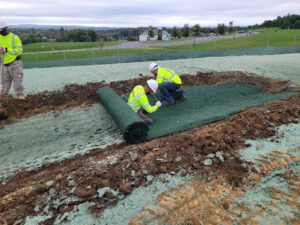A local map is a type of map that shows the location and boundaries of a geographic area. It can also be used to show information about businesses and landmarks in the area.

Optimizing for the Google Map Pack involves a number of different strategies. These include optimizing your Google Business Profile, gaining positive reviews, and more. Visit https://www.rankboss.com/ to learn more.
Local map listings (or citations) are online profiles that provide essential information about your business like its name, address, phone number, and website. They also include other important details like business hours and customer reviews. Search engines use this information to determine your business’s local search ranking. Without an optimized Google Map listing, your business could lose out on valuable visibility to local customers.
Local maps are one of the most useful tools for attracting new customers and improving sales. Incorporating SEO into your marketing strategy can boost your Google Maps ranking, giving you more visibility and increased traffic. We’ll work with you to optimise your online profile, share custom maps with directions to your business, and create high-quality Google images that will improve your rankings.
One of the most effective ways to drive local search traffic is to rank in the Google Map Pack, a group of top-ranking local businesses displayed at the top of the Google local search results. Optimizing for the Google Map Pack involves a combination of different strategies, including business profile optimization, keyword research, and review acquisition.
Getting in the Map Pack can help you increase your website and phone traffic as users click through to your business’s online profile or call the company directly. This can also lead to more foot traffic and sales at your physical location.
Google has taken over local searches and is now the #1 search engine in the world. Google Maps are a key part of this shift in user behavior, which means that local search engine optimization is now more important than ever.
Google Maps listings allow users to find businesses with the information they need to make a purchase, including contact information, photos, ratings, and reviews. This information can make or break a purchasing decision. A verified local map listing can boost your reputation, give you more credibility and trustworthiness, and encourage more purchases from new customers. In addition, local listings can also help you rank higher in organic searches.
Increased Traffic
A local map listing is a search engine-optimized online profile of your business that includes basic information like the address, phone number and website as well as more detailed information, such as your business hours and customer reviews. Having an optimized business listing is essential to local SEO because it increases your visibility when users are searching for services or products in your area. This results in increased foot traffic, more website visits and ultimately more sales for your business.
The Google Map Pack is one of the most important spots in local search results and ranking high in this pack can help you drive a lot of organic traffic to your business. It takes a combination of local SEO strategies to rank in the Map Pack, including optimizing your Google Business Profile and following other best practices. Once you’ve achieved a top spot in the Map Pack, your business will appear in the first three results for most relevant searches and attract more customers to your physical location or website.
Aside from increasing your visibility and attracting more traffic, a local map listing can also increase the trust and credibility of your business. When customers see that you have an active and updated Google Maps profile with accurate information, they will be more likely to trust your services and be willing to make a purchase.
Local map listings provide a direct connection between your business and potential customers, allowing them to call you directly or visit your website with just a few clicks of a mouse. To find out more about how a local map listing can improve your SEO, schedule a free consultation with the experts at Kia Ora Digital today.
Increased Sales
In a digital world where customers are always looking for the best deals and services, having an online presence is crucial. Search engines like Google Maps are not only a popular tool for finding directions, but also allow businesses to list their products and services and connect with their local customer base. By optimising your business’s Google Map listing, you can increase your visibility to potential customers and boost sales.
Our digital marketing team can optimise your local map listing to include all the important information about your company including the physical location, directions, contact information and operating hours. This will help new customers to easily contact you and make a purchase decision.
SEO can significantly increase your local map pack rankings, which will in turn lead to more foot traffic and website visits. It is one of the most cost-effective ways to grow your local business and reach a wider audience. To find out how SEO can benefit your local business, get in touch with Kia Ora Digital today. Our experts will be happy to assist you.
Increased Reputation
Local search engine optimization includes a variety of strategies that optimize business listings. Many of these tactics aim to rank a business’s listing in the Map Pack. This pack is a group of business results that appear exclusively on SERPs for local searches and provides the business’s address, contact number, and website link. Getting in the Map Pack is a great way to increase the visibility of a business, which can lead to more traffic and sales.
Optimizing for the Map Pack requires a combination of strategies, but the primary method is optimizing the Google Business Profile. This includes completing all fields, adding photos and videos, and verifying the business’s identity. It also involves utilizing keywords to help the business rank for local searches and gaining positive customer reviews.
In addition, implementing online reputation management strategies can help businesses strengthen their online presence and boost their visibility on Google Maps. These techniques include monitoring review volume, customer sentiment, and complaints, and using tools to respond to online reviews quickly and effectively.
A robust online reputation helps a business build trust and credibility with customers. It can be especially important for small businesses that serve a specific geographic area. In addition to online reviews, local map listings allow consumers to engage directly with businesses by calling or visiting their websites. This type of interaction increases brand loyalty and can even drive new customers to a business.
Search engines reward businesses with strong online reputations by ranking them higher in local search results. To earn a top spot on Google Maps, businesses must follow best practices to ensure their information is accurate and consistent across all channels. Having the correct NAP (name, address, phone number) is crucial, and it’s essential to be listed on major citation sites, such as Yelp and Bing Maps.


